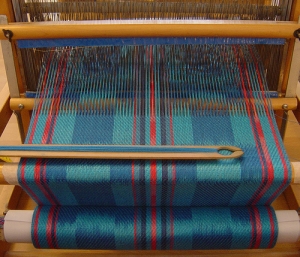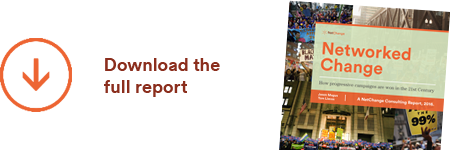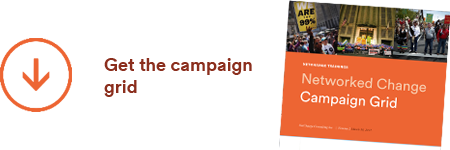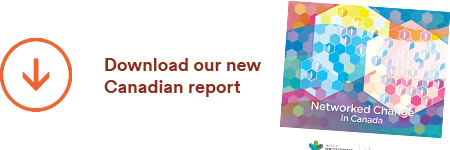There are few progressive issues we can look back at over the last 10 years that show measurable and sustained progress. This fact alone should greatly humble NGO campaigners, consultants, and funders alike. Whether it’s climate change, extreme poverty, financial regulations, or drug policy, as a movement for a better world we don’t seem to have a lot to cheer about lately. Yet at the same time there have been some incredible successes – from the growth of Avaaz to 12M+ members, to the Arab Spring, Obama’s election in 2008, and the early days of the Occupy Wall Street movement, that may point to the power of new, networked models of campaigns showing a new way.
Is it a coincidence that during this same time, the Internet has also disrupted the business models of most established industries, from travel to media to advertising? Will it not also transform the world of NGO’s? We see new businesses like Facebook, Google, Groupon, or Airbnb that have grown enormously fast, without following many of “the rules” on how to market or scale a business in a traditional way.
The common thread among initiatives that are struggling is centralized leadership in strongly hierarchical, highly independent, professionalized organizations. Many recent growth leaders take more of a network-centric approach to campaigning, with more flat, nimble structures, strong reliance on partnerships, and importantly people-powered engagement models at their core.
I’ve been an intimate part of at least one very successful network initiative, the TckTckTck global campaign for climate action. In late 2008 a number of senior environmental leaders came together with funders to create a new kind of “open source” or flotilla campaign, with a coalition that eventually grew to over 200 global NGO’s. While we did not ultimately secure a climate agreement out of Copenhagen, the campaign was able to aggregate 17M global supporters, align the messages of hundreds of NGO’s around one clear ask, and create unprecedented policy, campaign, and communications collaboration within and across movements.
So what is a “network campaign”? The structure, the experience, and style of leadership are certainly different from your typical dysfunctional coalition! Network campaigns, far from having weak leadership, aim instead for distributed leadership: a model that allows multiple nodes to organically lead based on an emergent model of what the system needs most at the time. Long time visionary and friend Marty Kearns of Netcentric Campaigns defines net-centric campaigns as having the following seven attributes:
- Shared vision
- Trust
- A common story
- Shared communications grid
- Shared resources
- Feedback mechanisms
- Network weavers
The TckTckTck campaign mentioned above reflected many of these, which is why it was a successful movement building strategy in many ways. Below I’ll explore the structures built for each, and how the award winning digital campaign we created was central to them.
Shared Vision
This is the most critical and foundational element. Our shared vision at TckTckTck was that the UN Copenhagen conference would be a major moment in history, and that no NGO could muster enough political power to shift momentum towards a deal on their own, in fact no movement could alone. There was general agreement on the goal (Copenhagen) and the method taken to achieve it (collaborative campaigning). The digital strategy was designed to support this.
Trust
Trust was built through a lot of listening by the campaign with key partners and management structures that tied partners together at multiple levels. Many of our digital programs and infrastructure were designed to build trust among partners, which, while it was slow to start, really got off the ground over the 2 week period we all spent together in Copenhagen, which built a lasting asset for the movement.
Common Story

The common story was the shared language, in this case calling for a “Fair, Ambitious, and Binding global climate deal”. This was worked out via dozens of meetings and shared policy workshops (paid for by the campaign) amongst the key partners. The framing was effectively rolled out across nearly all partner communications channels and was picked up by outside actors from the British PM to major media, and was a major success of the campaign.
Shared Communications
Networks, according to Marty Kearns, thrive on the strength of one to one, one to many, and many to many conversations and exchanges. We invested heavily in shared communications resources, from bi-weekly conference calls, to 4 different list-servs segmented by audience type, to in-person planning meetings whenever possible. On the digital campaign we built a strong global private network of 500 digital campaigners and bloggers to share information and support each other’s work.
Shared Resources
This is the main area the campaign invested its resources, flowing through nearly half of our $10M budget as grants to partner initiatives. In the digital space we built the above mentioned “Climate Insiders” email network, offered up all our web tools as shared resources to the community, and also created the Fresh Air media center that ran for the full 2 weeks of the conference and served as the main media hub supporting hundreds of campaigners and message makers.
Feedback Mechanisms
Feedback mechanisms were critical to keeping the coalition functional and together. This started with the quality and tone of the leadership of the coalition. The campaigns director was an amazing listener, who was constantly asking for feedback and looking for metrics on how we could do better, what it would take to engage partners more deeply, why they were holding back, etc. In digital we developed the strategy in a highly collaborative process engaging dozens of partners’ staff at various levels, and continually listened to partners to adjust and adapt it to meet movement needs.
Network Weavers

Network weavers are people with the energy and ability to connect network members. They bring people together to take advantage of network resources, and make sure communications are working smoothly. Most of our small secretariat staff had these attributes, and operated naturally in ways that created a culture of easy, enjoyable collaboration and sharing. I remarked early on we were a “no ass-hole zone” which unfortunately is striking in its uniqueness in the campaigns sector which is typically full of hard-driving, strong-willed, independent thinking people. While those people certainly have a role, the last place you’d put them is at the center of a network campaign where softer, relationship skills & letting go of individual control and credit are critical.
What does this mean for your movement? To most of us, acting like a network comes naturally, and you might read this and say “of course, I always work in this way”. The challenge is, and be honest with me here, we’re often not intentional, or focused, or specifically resource around each of these 7 attributes. Do we build social capital among network members “for free, in the evenings”, or is that an important strategy that is baked into the core workplan?
The shift to network thinking is often subtle, but can have a big impact on the end result. As to the big question of getting started? That’s the best part: a network centric campaign starts by building off of what already is working and layering in areas that are missing. There is by nature no linear model to follow, no rigid proprietary framework that takes months to build and plan. As Marty Kearns puts it in his wisdom, start with what’s there. We can all do that!
Jason Mogus is Communicopia’s principal consultant and is the founder of Web of Change. He has been developing digital strategies for social change organizations for over 15 years. You can follow him at @mogusmoves.









